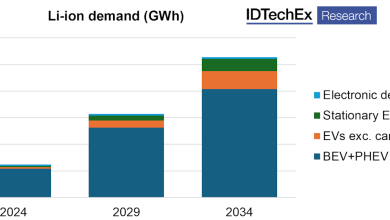Passenger vehicle telematics market surges to $8.37B by 2024
The passenger vehicle telematics market size will grow from $7.39 billion in 2023 to $8.37 billion in 2024 at a compound annual growth rate (CAGR) of 13.2%, according to The Business Research Company report. The growth in the historic period can be attributed to shift towards digitalization, consumer demand for connectivity, evolving insurance models, cost reduction in hardware and connectivity, market competition and differentiation.
The passenger vehicle telematics market size is expected to see rapid growth in the next few years. It will grow to $13.08 billion in 2028 at a compound annual growth rate (CAGR) of 11.8%. Moreover, the growth in the forecast period stems from telematics for traffic management and enhanced cybersecurity measures. There’s also a shift towards mobility as a service (MaaS), alongside a rise in connected infotainment systems and the integration of 5G technology. Furthermore, major trends in the forecast period include enhanced driver behavior analysis. Integration of vehicle-to-infrastructure (V2I) communication, expansion of over-the-air (OTA) updates, enhanced remote vehicle control, and telematics data monetization.
The passenger vehicle telematics market covered in this report is segmented –
- By Type: Remote Message Processing System, Brake System, Transmission Control System, Navigation System, Infotainment System, Safety And Security System
- By Communication: Vehicle-To-Vehicle (V2V), Vehicle-To-Everything (V2X), Vehicle-To-Infrastructure (V2I), Vehicle-To-Pedestrian (V2P)
- By Application: Passenger Car, Light Commercial Vehicle, Heavy Commercial Vehicle
The Surge In Passenger Vehicle Demand Fuels Growth In The Telematics Market
The expected increase in demand for passenger cars will drive the growth of the passenger vehicle telematics market going forward. Passenger cars refer to automobiles designed for the transportation of people. Modern passenger cars utilize telematics technology to enhance vehicle performance, safety, and connectivity. It also increases security, improves comfort, reduces maintenance costs, and provides speed monitoring and fleet management services. In May 2023, according to reports shared by the Society of Motor Manufacturers and Traders (SMMT), a UK-based trade association. Moreover, sales of passenger cars in the UK rose 16.7% in 2023 to 145,204 units. Furthermore, in May 2023, according to the European Automobile Manufacturers Association, a Belgium-based automobile association. In 2022, the European Union produced 10.9 million passenger automobiles, a rise of 8.3% from 2021. Therefore, the increasing demand for passenger cars is driving the growth of the passenger vehicle telematics market.
Competitive Landscape:
Major companies operating in the passenger vehicle telematics market report are Verizon Communications Inc., AT&T Inc, Robert Bosch GmbH, Vodafone Group plc, Qualcomm Inc., Continental AG, Bridgestone Corp., Danaher Corp., Telefonaktiebolaget LM Ericsson, Valeo SA, Harman International Industries, Garmin Ltd., Delphi Technologies plc, Visteon Corp., Trimble Inc., Agero Inc., Omnitracs LLC., Telenav Inc., Fleet Complete, MiX Telematics, OCTO Telematics S.p.A, Masternaut Limited, Bynx Ltd., Airbiquity Inc., AirIQ Inc.
Top Trend – The Emergence Of Advanced AI Technologies In The Passenger Vehicle Telematics Market
Advanced AI technologies are a key trend gaining popularity in the passenger vehicle telematics market. Major companies operating in the passenger vehicle telematics market are developing innovative, advanced AI technologies. These technologies aim to sustain their position in the market. For instance, in May 2021, Mix Telematics, a South Africa-based software company, launched MiX Vision AI, a next-generation AI-powered video telematics solution. This innovative solution utilizes artificial intelligence (AI) to detect risky driving behaviors such as distraction, phone use, and an unfastened seat belt. Additionally, it improves driver safety, increases fuel efficiency, enhances compliance, and reduces costs. It features AI-powered detection, real-time alerts to drivers, and video footage analysis.

